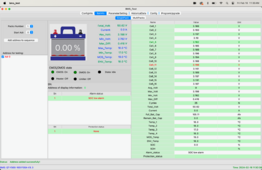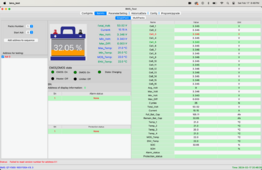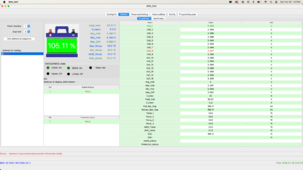We have a couple of systems from Signature Solar, all similarly configured with Lifepower4 batteries and Growatt 5000 inverters. One of our systems (with a 6 battery bank) has been acting strangely, with State of Charge going down faster than we would have expected. Last week, we arrived on site and the whole battery bank was drained down to 0% SOC. The inverter was off, but no breakers were popped. We believe we've isolated the issue to one battery, and have been trying to communicate with Signature Solar for support on next steps. @SignatureSolarJess has been very helpful, but we still haven't been able to talk to a tech support person after a week of trying via email and phone...so I'm hoping we might be able to find someone here who's had similar issues and knows of a solution. Jess did forward instructions for deep cycling the batteries, which requires 14 days of charging and discharging the batteries, but this is not feasible since the system is remote and off-grid. Plus, it just doesn't seem like we should have to go to such extremes just to reset the BMS - there has to be a better way!
So, we were able to charge the batteries back up using a Chargeverter. Here's the details of that process, and our findings. Any help would be greatly appreciated!
Here is the original BMS Test reading from the battery. The SOC was showing 0%. But, based on the Voltage reading of 50.6V, we’re guessing it was really at about 16% SOC. One thing we noticed was that Cell #5 was significantly lower than the others.

We hooked the battery up to a Chargeverter, and charge relatively slowly until SOC reached over 30% and the low SOC alarms turned off.

We then turned off the battery and let it sit overnight. The next morning, the SOC and voltage had not changed, so we figured that was a good sign. We then continued to charge the battery until it was full - everything looked good up until around 95%.

Right before hitting 95% SOC, the SOC jumped up to 105.11% and a Cell Over Voltage alarm went off. We could tell that all of the cells were within the same range, except for Cell #5 which was a good bit lower than the others. This was interesting, since cell #5 was also the cell that was also much lower than the others when the battery was at 0% SOC. The other interesting thing was that we did not get a battery over voltage alarm, and the battery was only at 57v.

After letting the battery settle for a bit, the voltage went down to 53.51V (which doesn’t appear to be at 100%). The Cell Over Voltage alarm is now off, and the SOC is still reading 105.11%. We're looking for help on next steps now - is there a way to reset the BMS? Should we put it back in the bank with the other 5 batteries?

So, we were able to charge the batteries back up using a Chargeverter. Here's the details of that process, and our findings. Any help would be greatly appreciated!
Here is the original BMS Test reading from the battery. The SOC was showing 0%. But, based on the Voltage reading of 50.6V, we’re guessing it was really at about 16% SOC. One thing we noticed was that Cell #5 was significantly lower than the others.

We hooked the battery up to a Chargeverter, and charge relatively slowly until SOC reached over 30% and the low SOC alarms turned off.

We then turned off the battery and let it sit overnight. The next morning, the SOC and voltage had not changed, so we figured that was a good sign. We then continued to charge the battery until it was full - everything looked good up until around 95%.

Right before hitting 95% SOC, the SOC jumped up to 105.11% and a Cell Over Voltage alarm went off. We could tell that all of the cells were within the same range, except for Cell #5 which was a good bit lower than the others. This was interesting, since cell #5 was also the cell that was also much lower than the others when the battery was at 0% SOC. The other interesting thing was that we did not get a battery over voltage alarm, and the battery was only at 57v.

After letting the battery settle for a bit, the voltage went down to 53.51V (which doesn’t appear to be at 100%). The Cell Over Voltage alarm is now off, and the SOC is still reading 105.11%. We're looking for help on next steps now - is there a way to reset the BMS? Should we put it back in the bank with the other 5 batteries?





